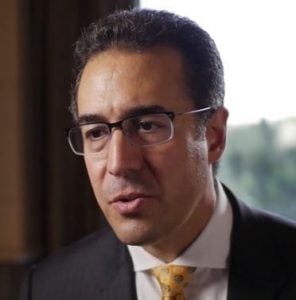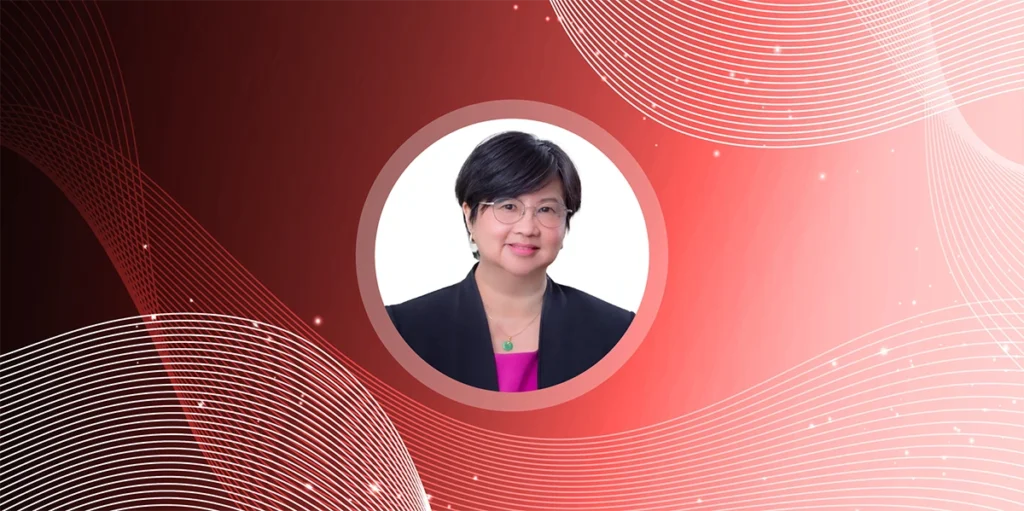What are your thoughts on the results of DAPA-HF and EMPEROR-Reduced?
EMPEROR-reduced enrolled patients with heart failure with reduced ejection fraction (EF) – It was a large trial, over 3700 patients were enrolled, and they were randomly allocated to empagliflozin 10 milligrams or matching placebo.
Last year during the ESC 2019 in Paris, we saw the results from the DAPA-HF trial, which was a trial that was almost similar to EMPEROR-reduced, but it was with dapagliflozin 10 milligrams. That trial showed very striking results with reductions in the primary endpoints – heart failure hospitalisation and cardiovascular death, and also many secondary endpoints. That trial was a mega-hit – it was a big success.
Everyone eagerly awaited the results from EMPEROR-reduced, because with two trials confirming the result, this becomes very reassuring and important. That exactly is what EMPEROR-reduced did – it reassured us. The primary endpoint was again heart failure hospitalisation or cardiovascular death, whatever came first, and that was effectively reduced with empagliflozin by 25%, so, the effect size was almost 100% comparable to DAPA-HF.
Get the latest updates in your inbox
Stay InformedEMPEROR-reduced had three predefined primary endpoints – the first one was cardiovascular death and heart failure hospitalisation, the second one was repeated heart failure hospitalisation, the third one was renal endpoint, and all three were met.
The intrinsic feeling that many people had was to compare it to DAPA-HF – I think there were more similarities than there were differences. The major thing was that the effect size with regards to the primary endpoint was almost overlapping, so that was great. There were a few differences, and many of them, I think, had to do with trial design and patient selection. So, where DAPA-HF tended to enrol patients that were relatively stable and didn’t have too progressed disease, EMPEROR-reduced had enrichment for more severe heart failure, and this was due to the fact that the EMPEROR-reduced investigators had a complex schedule of enrolling patients where either patient had a very low EF, 30% or below. If the EF was above 30% or even below 35%, then the inclusion criterion for NT-proBNP was different – that was much higher. With this kind of biphasic trial design, they forced themselves to enrol patients that had more severe heart failure than patients in DAPA-HF, and this was evidence in the end because mean EF was 27% in EMPEROR, whereas it was 31 in DAPA-HF, and mean NT-proBNP was 1900 in EMPEROR, whereas it was 1500 in DAPA-HF. So, there were some differences there.
With regards to outcomes, there were more primary endpoints per hundred patient-years with EMPEROR-reduced, which is in line with the severity of the disease, but this was almost exclusively explained by a higher incidence of HF hospitalisation. Cardiovascular death rate was comparable between the two trials and as a result, because EMPEROR was smaller than DAPA-HF, it was 3700 against 4700, and the mean follow up was also shorter; it was just 16 months versus 18 months in likely500 in DAPA-HF, and there was no significant difference between empagliflozin and placebo with regards to cardiovascular death. So, my feeling is that it is because of a lack of power, an alternative hypothesis would be that empagliflozin reduces the overall endpoint but not cardiovascular mortality and I think from a mechanistic point of view, from a pathophysiological point of view, that is a very unlikely scenario. So, again, the two trials really reinforce one another. We now have not just one, but we have two large, well-powered trials that exactly point towards the same result, that SGLT2 inhibition appears to be very beneficial in heart failure with reduced ejection fraction.
I think there are two additional observations that are very important; first was that as in DAPA-HF, EMPEROR-reduced enrolled patients with and without prevalent diabetes mellitus and the drug was equally effective in patients with and without diabetes mellitus. So, we now have more evidence that these drugs, that initially were denoted as oral glucose-lowering drugs as antidiabetic drugs, in fact, are more than that – they are also heart failure modifying drugs, independent of the diabetic status. It’s very important that, I think, in the long term, we can foresee that these drugs will be used in patients with heart failure without diabetes. That’s one very important aspect.
Another very important aspect is applicability and safety. These are easy drugs. There is a fixed-dose for these two drugs; it’s 10 milligrams. There are other drugs in the same class that have a different dosage, but this is a fixed-dose that you can start right away. There’s no need to titrate and the use of these drugs goes at the expense of very few side effects. Renal dysfunction, hypertension – very common side effects in vulnerable HF patients were not numerically nor significantly more prevalent in the patients allocated to active drugs compared to placebo – very applicable, safe and reassuring outcome. So again, I would say this was one of the highlights of ESC 2020, and people have embraced it and discussed it a lot.
Are these results sufficient to establish SGLT2 inhibitors as a new standard of care along with (ACEi/ARBs/ARNi, BB and MRA) for patients with HFrEF?
It will be challenging to decide where exactly we want to position SGLT2 inhibitors in this arena and I think now we have these two trials, there’s no doubt that some form of recommendation will come out.
I think what is interesting is that most patients who develop heart failure will have a number of precipitating factors such as obesity, diabetes and hypertension. In other words, will have a high cardiovascular risk and according to current diabetes guidelines, many of them will already have an indication for SGLT2 inhibitors prior to heart failure development. So, to some extent, this dilemma on where to start, when to start and how to start will not be a dilemma to heart failure physicians, but it will be to other physicians on where exactly these drugs come in. But if we regard a patient with new-onset heart failure that doesn’t receive treatment with SGLT2 inhibitors as of yet, then, of course, we have to look at the data that we have available. Again DAPA-HF, EMPEROR-reduced, in both trials patients already received very substantial background therapies and were still symptomatic and still had depressed EF, and then they were randomised to these drugs. I think in heart failure guidelines, it is very likely that the recommendation will follow the design of the trial. But again, there is likely a much higher number of patients that will receive the drugs because they are now a first-line choice in diabetes, and I think in diabetes and cardiovascular risk management guidelines, these drugs will receive ample recommendations.
What is the role of SGLT2 inhibitors in patients with HF and CKD?
These drugs already received a lot of attention from nephrologists and doctors of internal medicine with an interest in renal disease because of the renal protective effects that were observed in the type 2 diabetes trials EMPA-REG, CANVAS Program and also DECLARE-TIMI. Also, during ESC 2020, another seminal trial was presented, the DAPA-CKD trial, which was a trial where patients with nephropathy were treated with dapagliflozin in an effort to reduce the number of renal and cardiovascular endpoints. This trial was also overwhelmingly positive. The trial was just published this week in the New England Journal of Medicine. I think it is a very important trial. I am not a nephrologist, but we all know how difficult it is to attenuate the decline in eGFR in patients with nephropathy, how difficult it is to limit proteinuria and this is exactly the trial population in DAPA-CKD, and again the SGLT2 inhibitors proved to be very effective in this population as well.
I think we now have good proof – in combination with the CREDENCE trial with canagliflozin, that SGLT2 inhibitors are renal protective, and that is important in the treatment of heart failure because we know that many treatments are, in fact, limited by renal side effects and as a heart failure community we no longer have to fear renal side effects if we think about SGLT2 inhibitors in heart failure. On the contrary, I think we should hope for renal protection.
Both in DAPA- HF and EMPEROR-reduced, there was indeed a slowing of the decline in eGFR, so the renal protective effects were indeed recapitulated. In DAPA-HF, the lower exclusion criterion for eGFR was 30, but in EMPEROR-reduced, it was only 20. So, I think we have now good evidence across the range of eGFR in heart failure, that these drugs are beneficial and are safe, and are probably also renal protective. It’s a very important aspect. This is what physicians really like – both efficacy and safety.


















